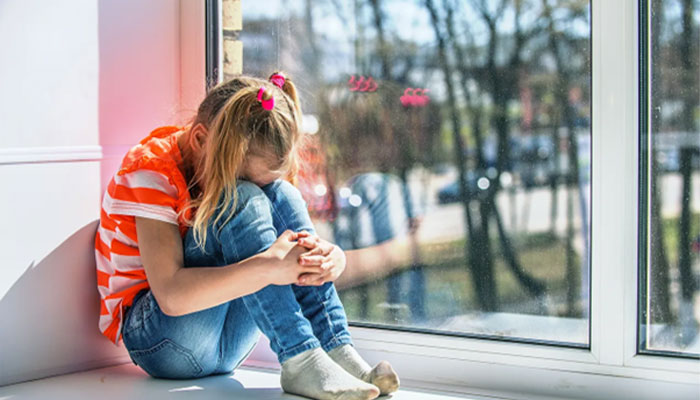- +91 7680015156
- advaithacdc@gmail.com
Anxious Behavior
- Home
- Blogs
- Anxious Behavior
Anxious Behavior in Children: Understanding Anxiety, Hyperventilation, and the Fight-or-Flight Response
It’s natural for children to face anxiety during different stages of development. While occasional worry or nervousness is a part of growing up, some children may experience anxiety at levels that significantly impact their daily lives. In such cases, anxiety can manifest in more intense reactions like panic attacks, extreme fears, or avoidance of routine activities and social interactions.

Recognizing Anxious Behavior
Often, adults may mistake a child’s anxious response for misbehavior. For instance, frequent meltdowns or tantrums may appear as disruptive conduct but could actually be signs of deeper emotional distress. While tantrums are typical between ages 1 and 3 due to developing language and emotional expression, persistent episodes beyond this stage may signal anxiety disorders.
When children continue to exhibit extreme emotional reactions such as outbursts, avoidance, or intense fear beyond toddlerhood, it's essential to look deeper. These behaviors may be expressions of overwhelming stress and should not be dismissed as simple misbehavior.
Monitoring Behavior from an Observational Viewpoint
Take time to observe your child’s reactions and patterns. Pay close attention to the words they repeat or the circumstances that trigger emotional breakdowns. In many cases, anxious children may experience what seems like a tantrum, but is actually a panic response. Their fight-or-flight mechanism becomes activated, often pushing them toward aggressive (fight) responses.
In other instances, the child may hyperventilate—breathing becomes shallow and rapid, leading to further distress. This cycle can be hard to interrupt and is frequently rooted in unmanaged anxiety.
Understanding Hyperventilation in Children
Breathing is a natural, automatic process. However, during stressful events, a child may lose control of their breath. Instead of calm, deep breathing, they may begin to breathe quickly and shallowly, leading to physical symptoms such as:
- Dizziness due to reduced oxygen supply to tissues
- Cold extremities from decreased blood flow
- Headaches and poor focus caused by lowered brain circulation
- Sensation of breathlessness
- Muscle tightness linked to calcium imbalance
- Irritability and inappropriate emotional reactions due to overstimulated nerves
Hyperventilation isn’t always obvious. To an outsider, the child may seem dramatic or misbehaving. However, parents and educators who are familiar with the child’s condition recognize that these episodes can occur subtly and frequently, especially under chronic stress.
Identifying Warning Signs
If you suspect your child is struggling with anxiety, hyperventilation, or behavioral changes, consulting professionals such as pediatricians, occupational therapists, or child psychologists can help. Common indicators include mouth breathing, chest-only breathing, or shallow breaths concentrated in the upper chest rather than the abdomen.
Parents and teachers unaware of these subtle signs may find it challenging to respond effectively. Early intervention and guided support can make a significant difference in helping children regain emotional balance and healthy breathing habits.
Helpful Strategies to Calm an Anxious Child
While not all anxiety attacks or hyperventilation episodes can be prevented, certain strategies can help reduce their frequency and severity. Encouraging children to recognize and manage their emotions builds self-regulation skills they can use independently at school or in public places.
Calm Down Bottles
These sensory bottles filled with glitter or small objects provide visual focus during anxious episodes. Watching the glitter settle helps regulate the nervous system, breathing, and heartbeat. Shaking the bottle also offers proprioceptive input that grounds the child and helps them regain control.
Smell the Flowers, Blow Out the Candles
This breathing exercise teaches children to inhale slowly (as if smelling a flower) and exhale slowly (as if blowing out candles). Holding their breath for a few seconds before exhaling adds effectiveness, and mimicking candle-blowing can make it a fun, repeatable activity.
Sticky Hands Technique
Ask your child to press their palms and fingers together tightly, either pretending they are sticky or using putty/honey. Hold for 20 seconds, then slowly pull them apart. Repeating this action releases tension from the body and distracts from overwhelming emotions.
Tummy Breathing
Encourage your child to place a hand on their belly and focus on making that hand rise and fall with each breath. This teaches them to breathe deeply from the diaphragm instead of shallow chest breathing. Watching the movement helps reinforce the technique and calms the body.
Anxiety in children can be complex and often goes unnoticed or misinterpreted. By observing behaviors carefully, understanding physical responses like hyperventilation, and using targeted calming techniques, caregivers can offer meaningful support. Teaching self-regulation and creating a nurturing environment can empower children to handle anxiety in healthier ways.
Articles
- 7 Strategies to Accomplish Positive Compliance with Retained Primitive Reflex Integration
- Child with Zinc Deficiency may show signs of Learning Challenges
- Hands-Grasping Reflex Delays Handwriting and Speech Development if Retained
- Deep Breathing Activities to Calm Sensory Meltdowns and Ground Emotions
- 3 Retained Primitive Reflexes Responsible for Poor Balance
- toe walking
- Anxious Behavior
- Retained Primitive Reflexes that Cause Sensory Sensitivities
- Retained Primitive Reflexes Causing Picky Eating, Sugar Cravings and Compulsive Eating
- Tactile Defensiveness
- 10 Fun Activities to Boost Your Child's Speech Development
- Exploring Learning through Play: Educational Activities for Kids
- Why Crossing the Midline Activities Helped this Childrens Listen to his Teacher
- Music Therapy: Study Says Music Key for Non-Verbal Children and Children with Speech and Language Delays
- Tactile Toys for Sensory Defensiveness and Tactile Stimulation

